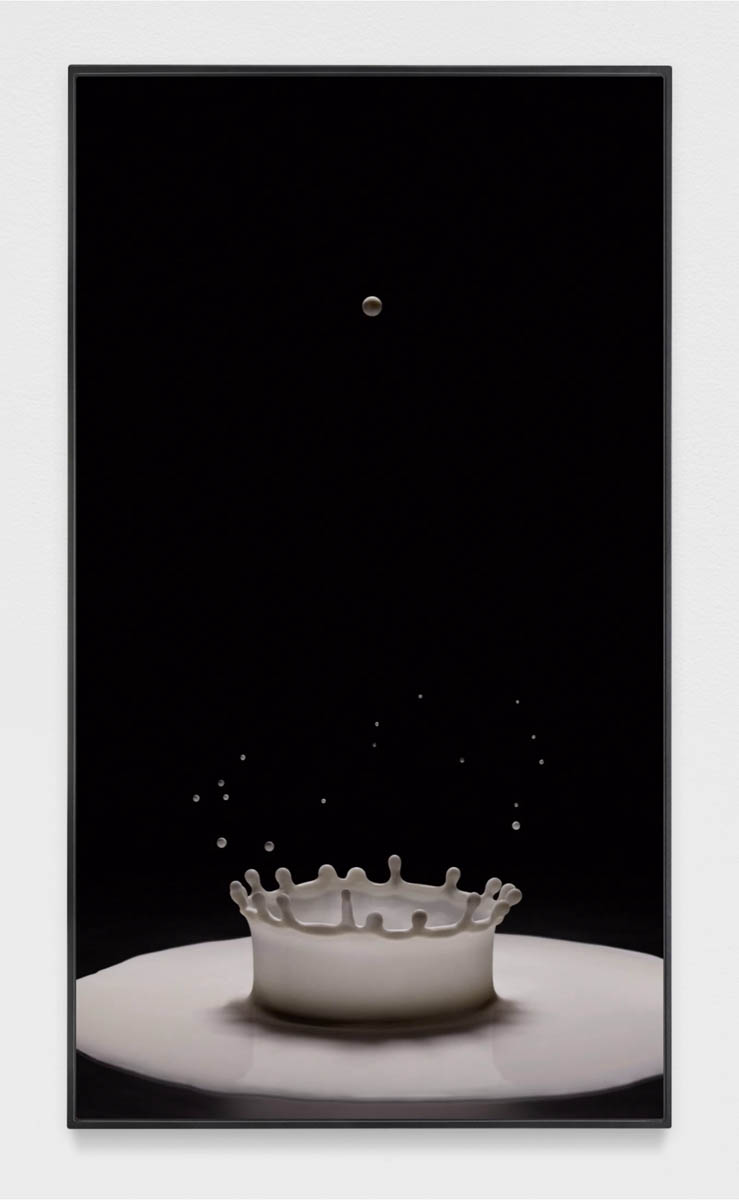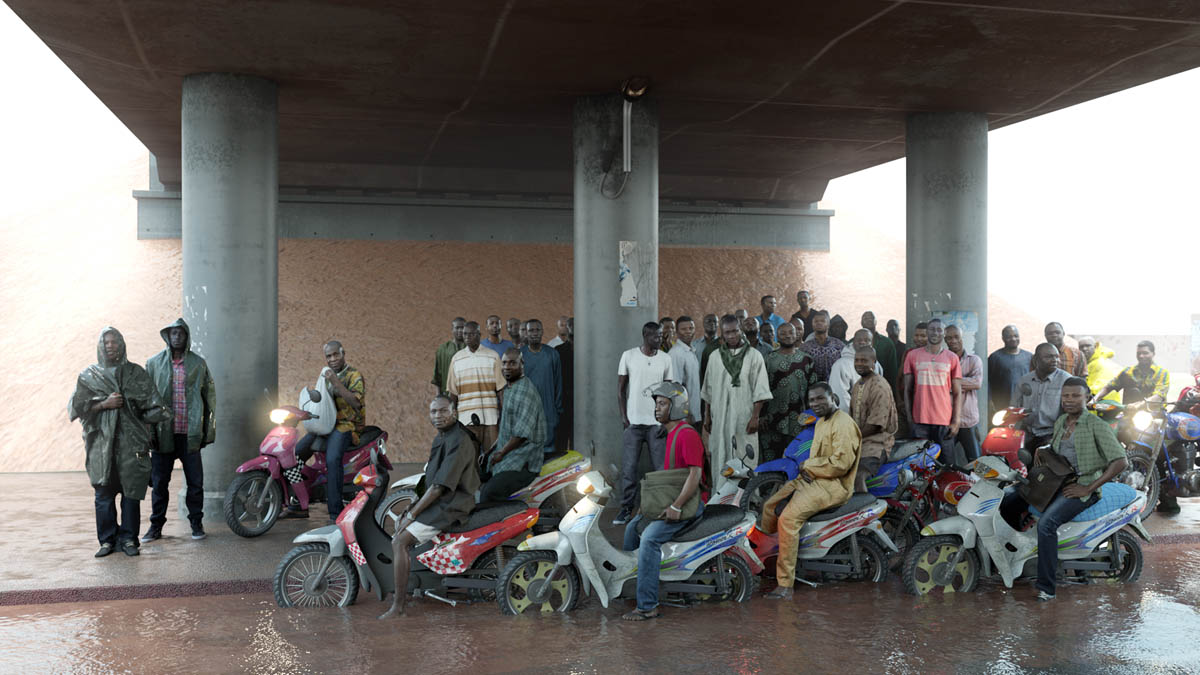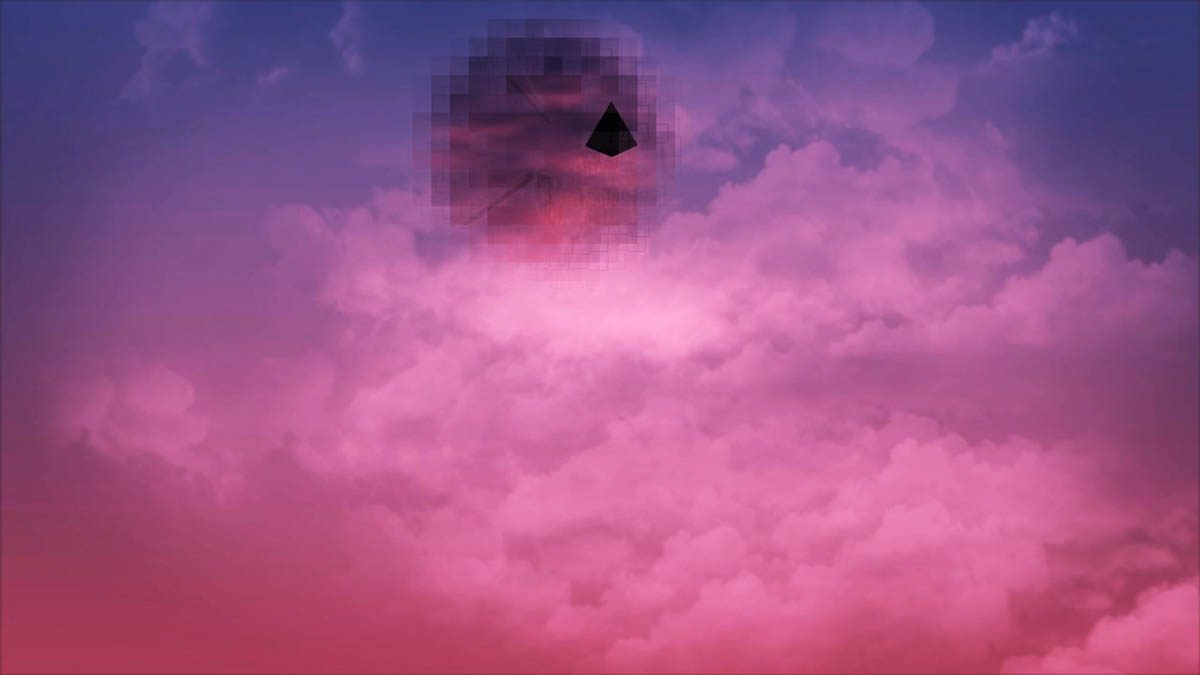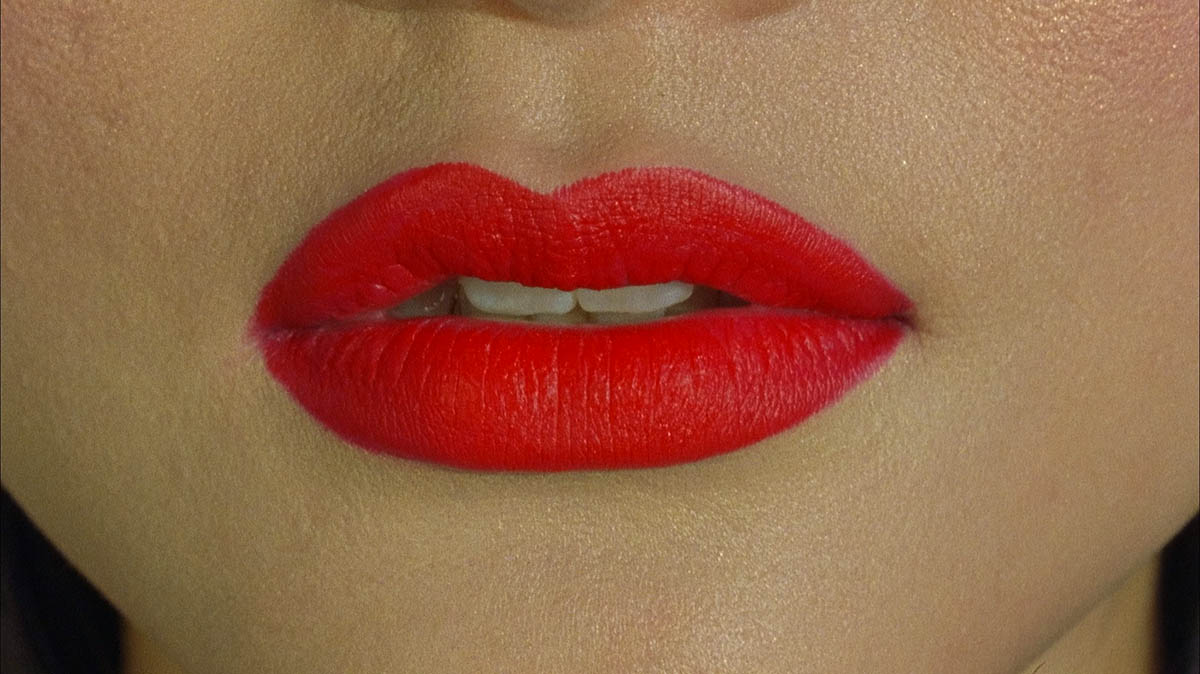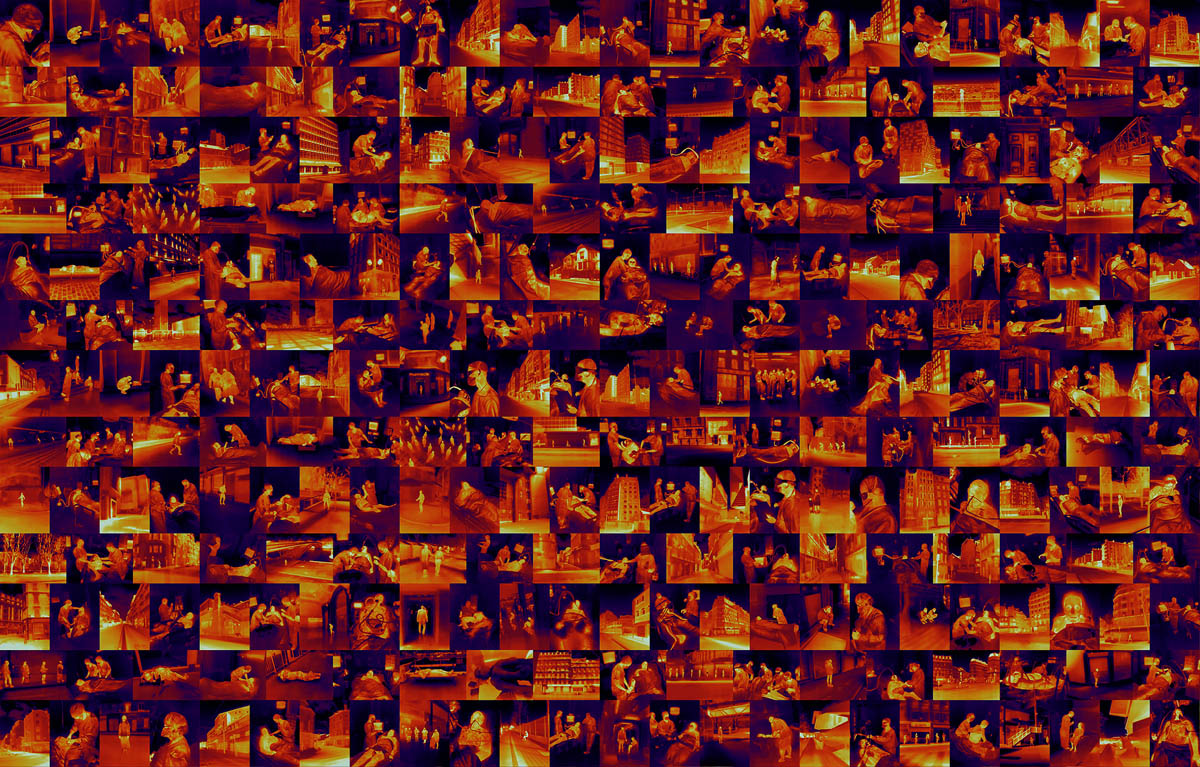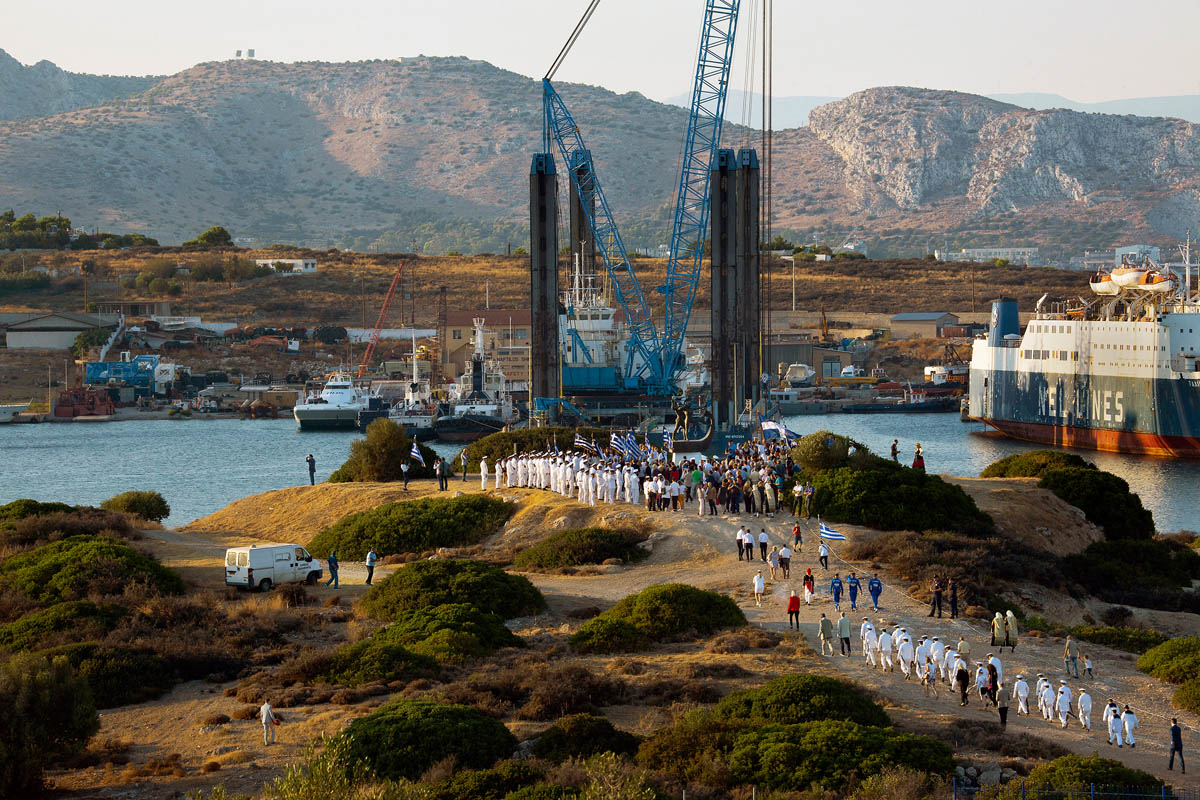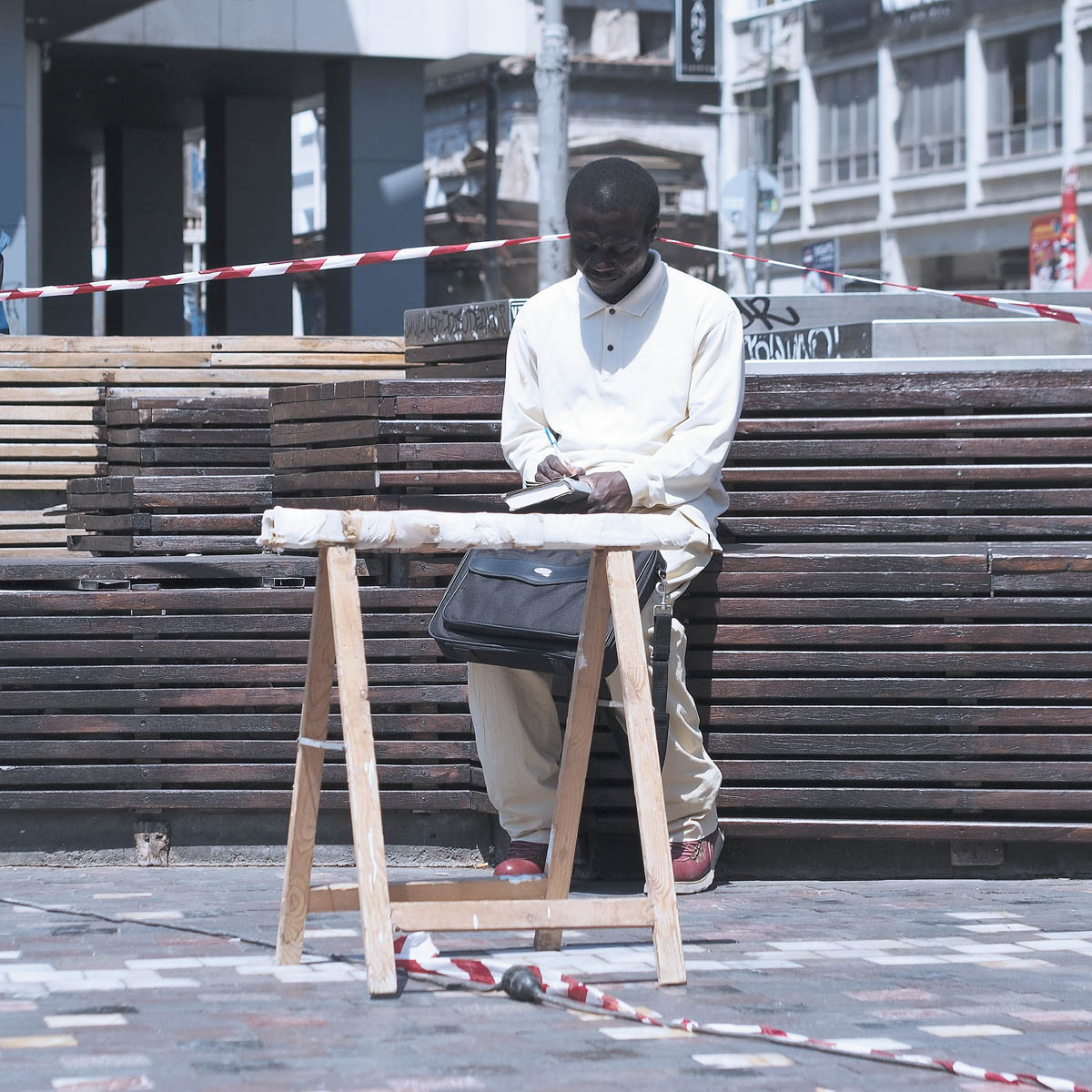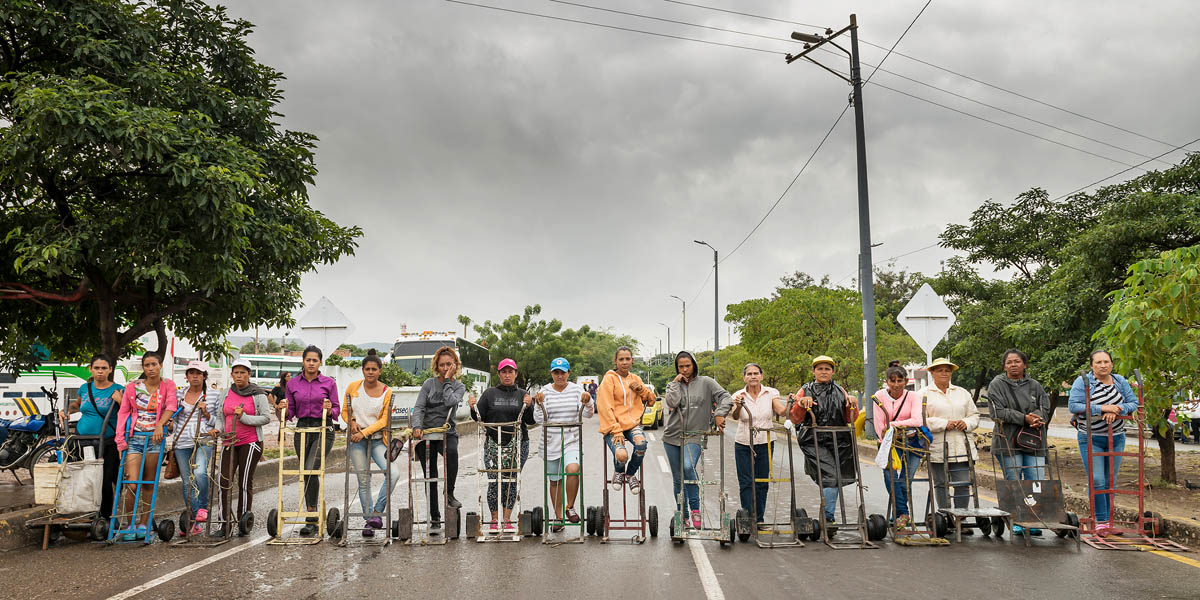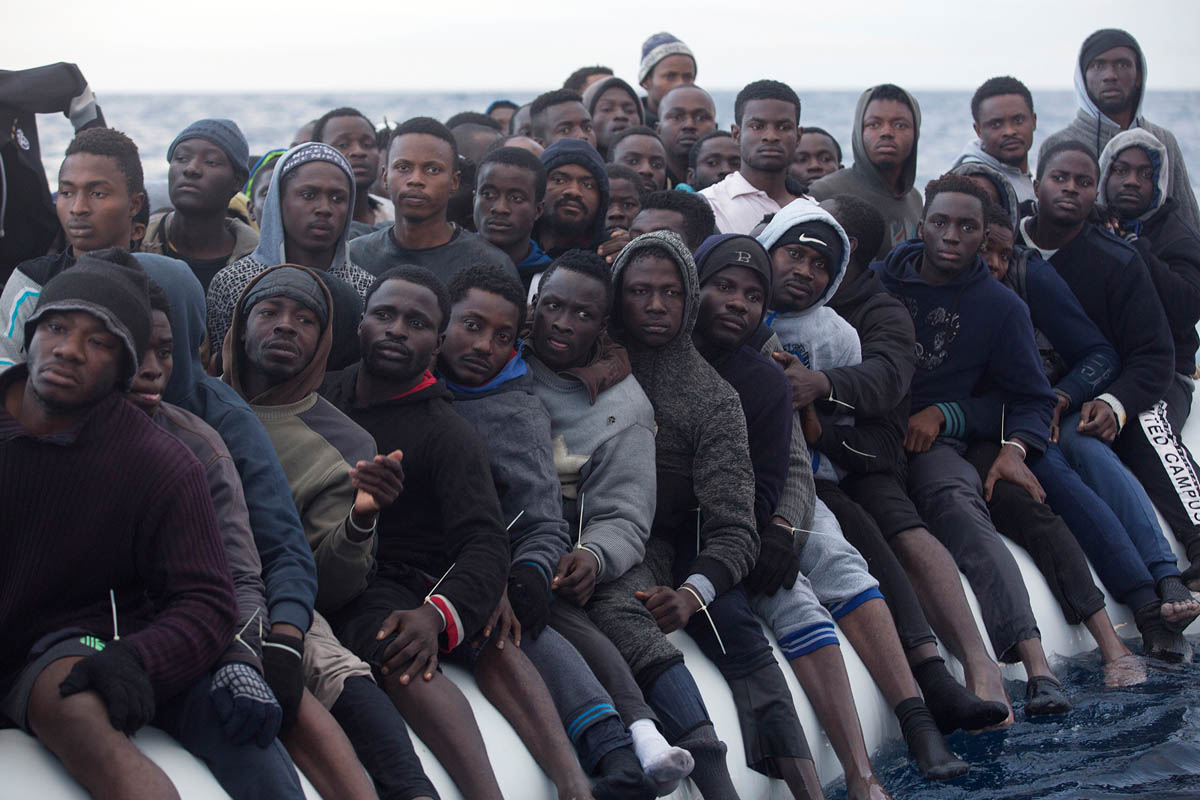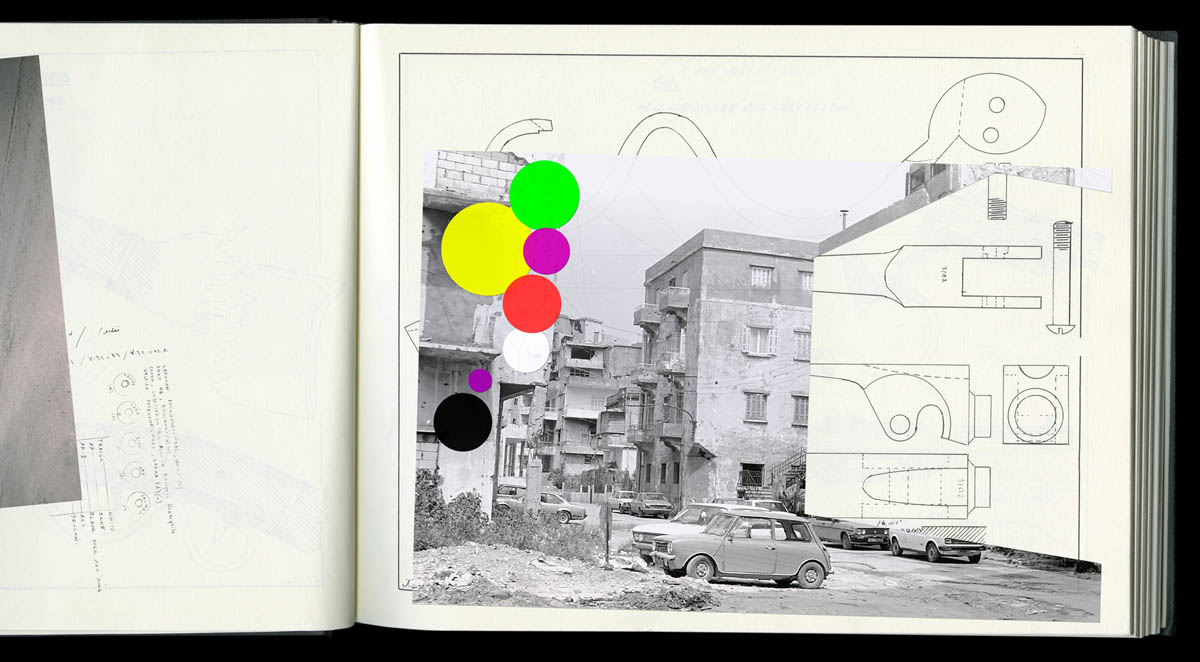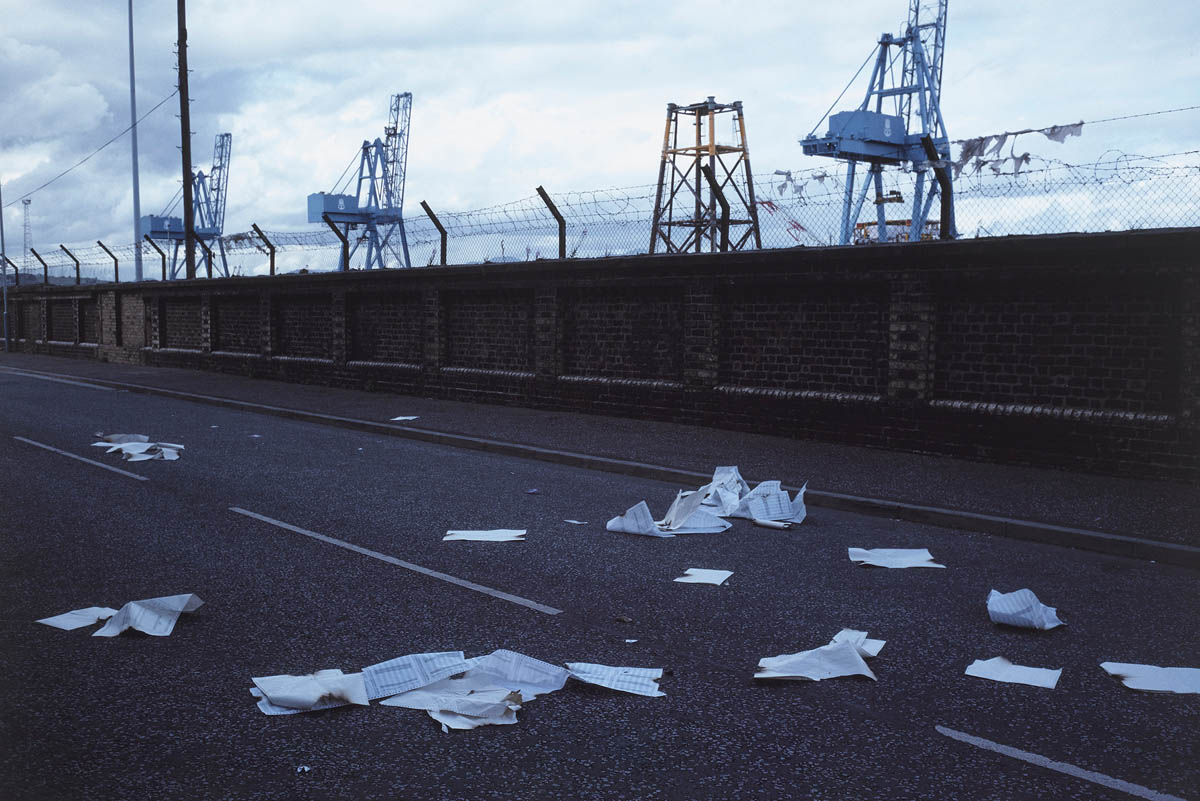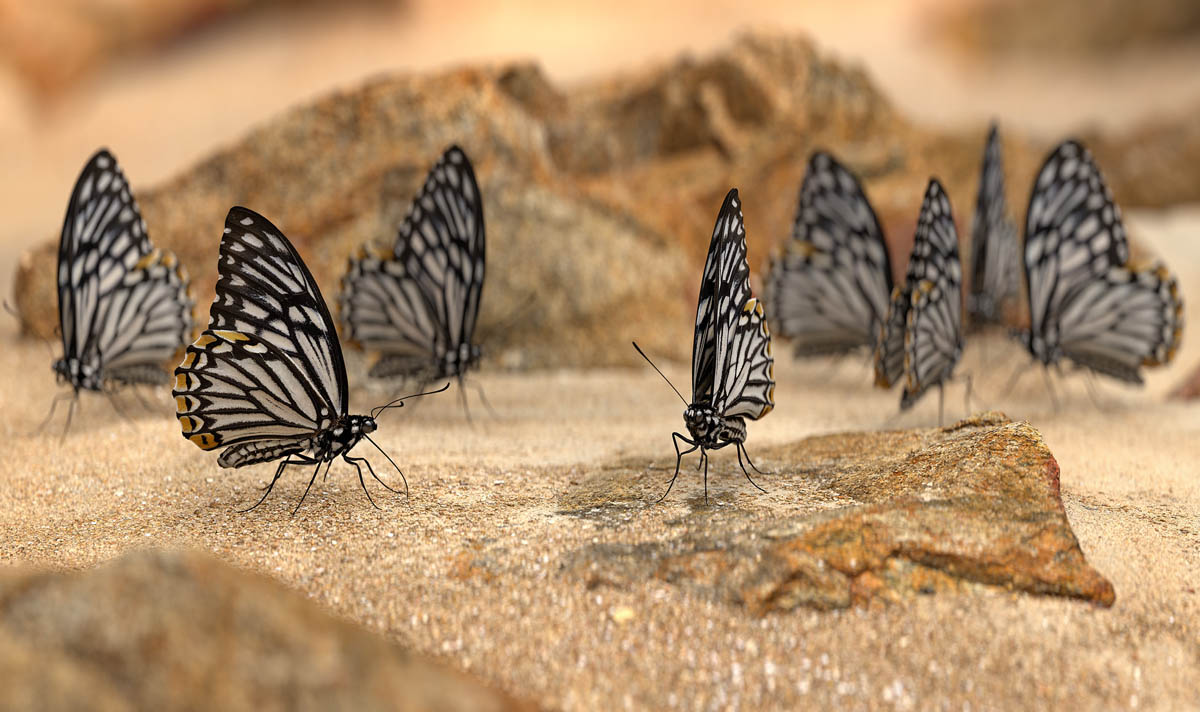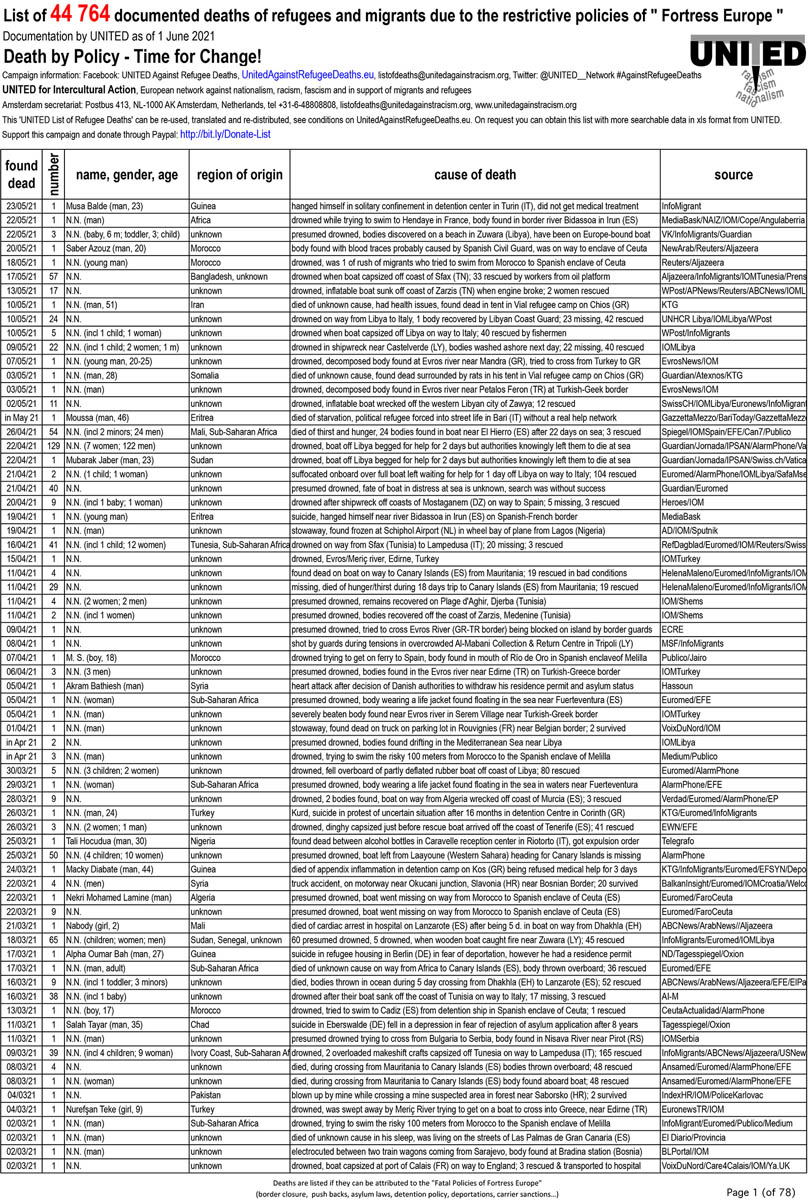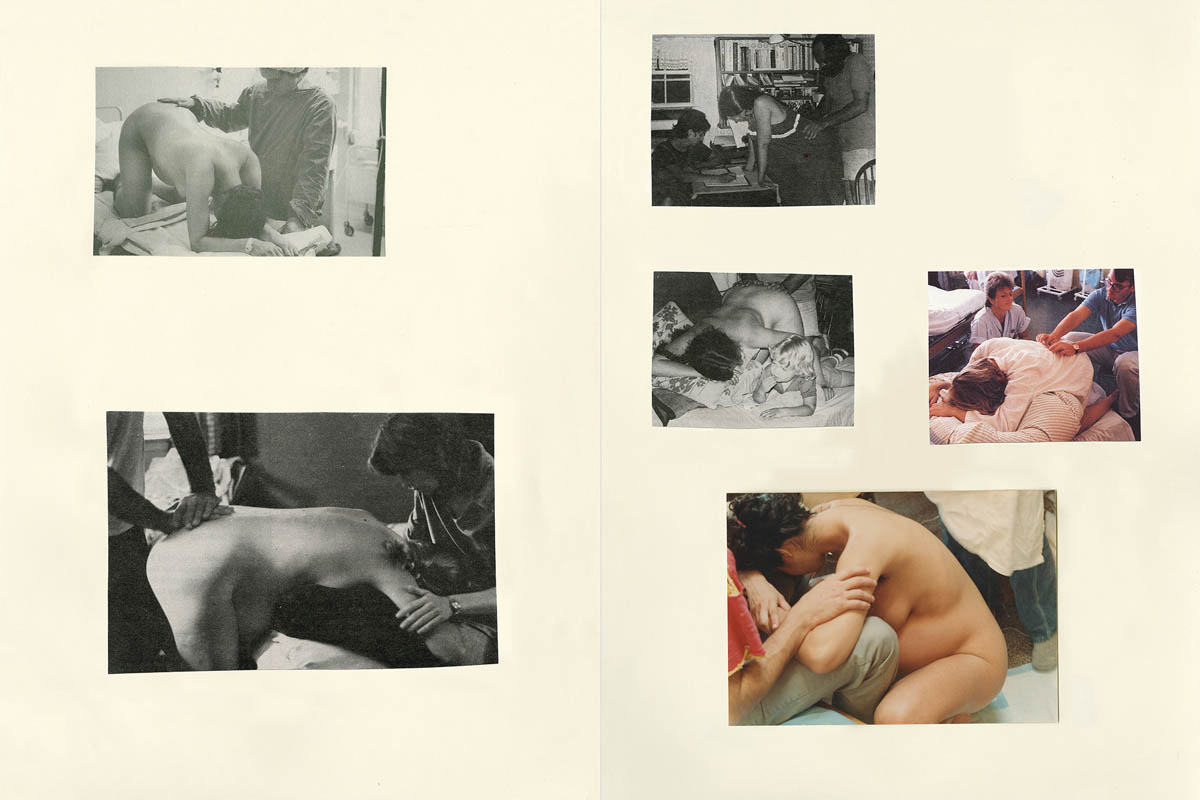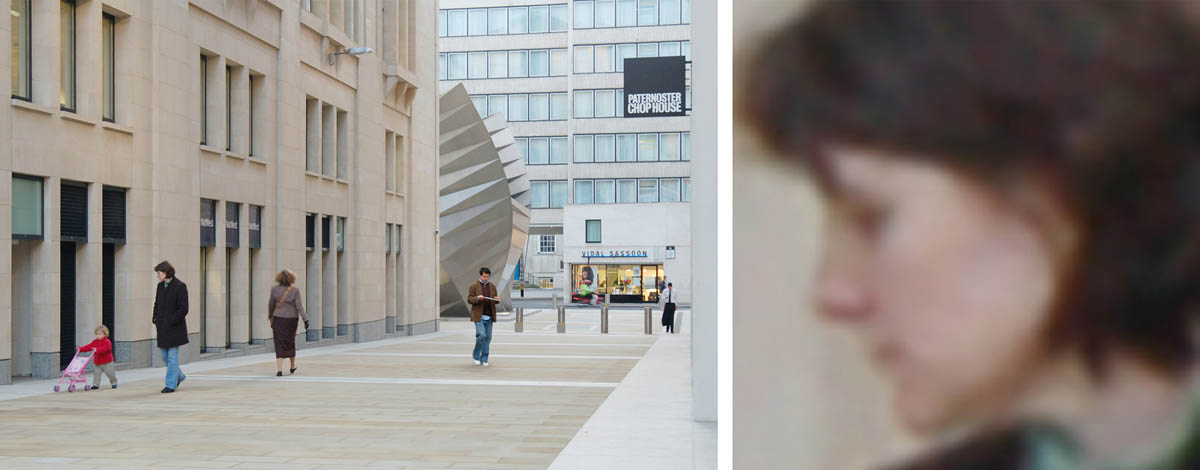The Real and the Record / Καλλιτέχνες
MATHIEU ASSELIN
MONSANTO: A PHOTOGRAPHIC INVESTIGATION, 2016
FRANCE / VENEZUELA, b. 1973
Mathieu Asselin’s meticulous investigation into the long history of the global biotechnology corporation Monsanto bring together hundreds of documents - press excerpts, judgments, archives, films, and testimonies - focusing on facts or dates that dramatically illustrate the ravages of all kinds which mark the company’s long history of sprawling development. Over a five-year period, Asselin conducted rigorous research and travelled through the US and Vietnam to find the people and places affected by Monsanto’s practices.
Thus, the drama of the small town of Aniston (Alabama, 1970), that became a ghost city as a result of releases into the air and water of the infamous and poisonous chlorinated PCB derivatives produced by the local factory. Thus, the terrifying Agent Orange - another Monsanto product - an acid-based herbicide and defoliant which the US military will detonate on the plains of Vietnam from 1968 to 1971, permanently contaminating up to ten percent of its territory and causing thousands of victims. The project also methodically illuminates another facet of Monsanto’s processes to establish its global grip: propaganda and communication. Whether they are advertisements describing an ideal world where chemistry and its derivatives contribute to universal well-being, or subjugating contracts signed by thousands of farmers condemning them to an unfair economic model and ecological nuisance, each document published by Monsanto can be analyzed as an exercise in disinformation. Monsanto: A Photographic Investigation is intended to pay tribute to the hundreds of associations, to the thousands of famous or anonymous individuals, “to the NGO’s who oppose with tenacity and at their own risk the perils of the Monsanto lobby”. Monsanto: Μια φωτογραφική έρευνα έχει ως στόχο να αποτίσει φόρο τιμής στους εκατοντάδες συλλόγους, στα χιλιάδες διάσημα ή ανώνυμα άτομα,“ στις ΜΚΟ που αντιτίθενται σθεναρά και με δική τους ευθύνη στους κινδύνους του λόμπι της Monsanto”.
LISA BARNARD
THE CANARY AND THE HAMMER, 2015 - 2019
UNITED KINGDOM, b. 1967
Photographed across four years and four continents, The The Canary and the Hammer details our reverence for gold and its role in humanity’s ruthless pursuit of progress. Through a mix of image, text and archival material, this project by British artist Lisa Barnard provides a fascinating insight into the troubled history of gold and the complex ways it intersects with the global economy.
Gold is ubiquitous in modern life; the mineral is concealed at the heart of much of the technology we use and is, most fundamentally, a potent symbol of value, beauty, purity, greed and political power. The The Canary and the Hammer strives to connect these disparate stories—from the mania of the gold rush and the brutal world of modern mining, to the sexual politics of the industry and gold’s often dark but indispensable role at the heart of high-tech industry.
Prompted by the financial crisis of 2008 and its stark reminder of the global west’s determination to accumulate wealth, Barnard sets out to question gold’s continued status as economic barometer amidst new intangible forms of technological high—finance. By addressing this through photography, Barnard in turn raises the question of how her chosen medium can respond to such abstract events and concepts. The result is an ambitious project, one sketching a personal journey in which she ultimately tackles the complexity of material representation in these fragmented and troubling times. The project was published by MACK in 2019.
ALEXIS VASILIKOS
SPACE MOTTOS, 2019
GREECE, b. 1977
Τα Space Mottos είναι μια σειρά ψηφιακών κολάζ που αποτελούνται από δύο στοιχεία, εικόνες του διαστήματος από το διαδικτυακό αρχείο της NASA και εθνικά μότο από την σελίδα εθνικών μότο της Wikipedia.
Jidhu Krishnamurti stated that “nationalism is the glorification of tribalism”. Tribalism is one of the fundamental characteristics of our species. Where humans live, the sense of a tribe arises and develops. It’s hard to imagine humans without the sense of belonging to some tribe. Our identity as particular individuals is based on it and although tribal consciousness is essential in defining a collective ego-identity what does it really say about us, as a species? How does our limited identification as members of particular groups function when it is seen from the perspective of infinity?
And how does our culture look like from the viewpoint of space consciousness? Are we bringing into space the same attitude we have towards Earth, the culture of the conqueror, the colonizer?
Are we going to continue creating borders and imaginary divisions in space? Or perhaps we can see the possibility of recognizing in space something greater than tribal consciousness, something unlimited?
ALEXANDRA BELL
A TEENAGER WITH PROMISE (ANNOTATED), 2017
USA, b. 1983
In A Teenager With Promise (Annotated) (2017) the artist identifies misleading frameworks and false equivalencies in The New York Times coverage of the 2014 murder an unarmed 18-year-old Michael Brown, Jr. by Ferguson, MO police officer Darren Wilson. Using highlights, marginalia, and redaction, Bell interrogates the negative language used to describe Brown as well as the sympathetic language assigned to Darren Wilson. Across three panels she argues back, eliminates text, and ultimately undoes the Times' decision to intertwine and legitimize the story of a policeman and his victim. In the end, the third and final panel only features Michael Brown, Jr. in his high school cap and gown—it's a nostalgic image and one that seeks to remind the viewer that Brown was a child. This work is part of the Counternarratives Counternarratives series where the artist revises articles to challenge the presumption of "objectivity" in news media.
The Counternarratives series (2017-) perform visual examinations that reveal the New York Times’ complicity in perpetuating racial prejudice in America. Through redactions of original text, revised headlines, and margins replete with red sharpie annotations—Bell reveals the implicit biases that control how narratives involving Black communities are depicted and in turn disseminated under the aegis of journalistic ‘objectivity.’ The series demonstrates the extent to which white-centered and sympathetic news coverage remains pervasive, even within liberal news organizations. By arguing back and calling out these inequities, Bell gives voice to the ways in which power operates through language.
CROFTON BLACK & EDMUND CLARK
NEGATIVE PUBLICITY [REDACTED], ΔΗΜΟΣΙΟΤΗΤΑ [ΑΠΟΣΙΩΠΗΜΕΝΗ] 2011 - 2016
UNITED KINGDOM, b. 1974 & 1963
In their work, the British photographer Edmund Clark and the investigator Crofton Black deal with the practice of illegal detention by the USA. As a consequence of the War on Terror, declared by George W. Bush in 2001, dozens of people were disappeared by the Central Intelligence Agency (CIA) and taken to secret locations around the globe, where they were held incommunicado and tortured. No public disclosure of their detention or whereabouts was made. Clark and Black have documented the secret activities of a network of actors involved in the detention programme, presenting flight schedules, declassified documents, contracts and invoices, redacted for reasons of state security, with photographs of significant locations redacted for reasons of law and consent. Negative Publicity [Redacted] indicates how lack of information, deletions and blank spaces can visualise the extent of the secret and the process itself unfolding in plain sight.
MATTHEW BOOTH
MILK DROP CORONET, 2013
CANADA, b. 1982
Το Milk Drop Coronet was photographed with a homemade apparatus in a makeshift studio in Mississauga, Canada, in early 2013. It is a looping video that continuously circles the frozen-in- time splash of a drop of milk that has fallen into a shallow pool on an acrylic surface, while a smaller drop hangs suspended overhead. This particular splash was selected for its form, for the constellation of micro-droplets that have escaped its surface tension to float in the air above, and for its compositional resemblance to the 1936 Harold Edgerton photograph Milk Drop Coronet, whose title the work borrows.
The complexity of this fleeting event, invisible to the naked eye, was first suspected in the context of western science in 1874 when a student named H.F. Newall took note of a mark left on smoked glass by a spilled drop of collodion. Inspired by this observation, Newall’s friend A.M. Worthington developed an apparatus that allowed for illumination of the splash by electric spark at a predetermined instant—making its complex form visible for the first time. The observations Worthington’s apparatus enabled were recorded only as drawings until in 1894 the commercial availability of high-sensitivity glass plates made photographic exposures possible.
Worthington’s electric spark can be seen as a rudimentary version of the stroboscope that Edgerton developed and commercialized in the late 1920s and early 1930s at the Massachusetts Institute of Technology (MIT). Using this device, and undoubtedly inspired by the earlier scientist’s work, Edgerton recreated Worthington’s images many times—most famously in the 1936 black- and-white image and a 1957 color version.
Το Drop Coronet combines Worthington and Edgerton’s approach with a macro-photography version of the “bullet time” effect developed by John Gaeta for the 1999 film The Matrix to faithfully translate a real-world instance of the splash phenomenon to 3D space. The depicted splash was photographed simultaneously by thirteen DSLR cameras—twelve surrounding the subject and one overhead. After capture, the splash was painstakingly recreated in 3D modeling software with the assistance of Gregory Keech, Andrej Blom and Martin Ciastko, who digitally mimicked the exact positioning and focal lengths of the real-world cameras in order to use the photographs as overlays or guides that could be precisely traced. The textural information from the photographs was then mapped onto the resulting 3D model, and from this the final video was rendered with a duration of 360 seconds.
DAVID CLAERBOUT
OIL WORKERS (FROM THE SHELL COMPANY OF NIGERIA) RETURNING HOME FROM WORK, CAUGHT IN TORRENTIAL RAIN, 2013
BELGIUM, b. 1969
Meticulously reconstructed after a small JPEG image found on the Internet, (which also lends this work its title) we see a group portrait of men sheltering from monsoon rains. They would probably walk away as soon as the rain ends. Still, someone must have had the idea to seize the occasion to take a picture of people waiting for better weather or better times. Indeed, the longer one looks the more they appear to be stuck, until that impression changes into a more official portrait.
The video uses 3D computer techniques and a simple camera movement, setting adrift the certainties of the original image relating to the abundance of water.
Of all the manifestations of time, waiting is one of the most difficult, because it implies being unproductive. The price tag attached to minutes, hours and days makes time expensive. Yet duration can only be free when it is unproductive.
On the other hand drought, conflict and poverty surround Africa like a cloud of flies, determining the picture we have of a continent. It is rarely portrayed as wet. In this piece however, water is the starting point for a picture about the oil industry.
KYRIAKI GONI
MEGASTRUCTURES, 2016
GREECE, b. 1982
Technologies like eye-tracking and mouse-tracking are increasingly being embedded in our interactions with devices, whether we realize it or not. As you observe the clouds a small gradually opening hole reveals a depiction of the vast planetary surveillance infrastructures. At the same time, gaze-tracking technology follows where you eyes move.
When you look away, the screen reveals momentarily the path that your eyes followed, although that image is no longer visible to you. In observing the clouds, you become the object of observation by the machine, which traces and records your movements. What kinds of technology might be hidden behind our screens and what do they know about us?
SARA CWYNAR
RED FILM, 2018
CANADA, b. 1985
Η Red Film Film is the third film in a trilogy exploring how desire manifests through objects. Taking the tone and structure of an educational film, Red Film critiques capitalism’s persuasive, constant pressure to conform and consume; questioning the effects of this torrent on the self; and pointing to the use of ‘high art’ to sell aspirational merchandise. The film avoids drawing any conclusions but rather tries to recreate how it feels to be a human in relationship to intensified 21st century media culture. Centered around several objects and ideas—Cezanne brand jewelry boxes and Cezanne brand makeup, red commodities such as lipstick, contemporary red Comme des Garcons clothing, and a 1985 mustang convertible, Red Film combines footage of a makeup factory, dancers, a famous Rubens painting and the red convertible in a photo studio. The film touches on notions of truth and appearance, about our cultural insistence on connecting beauty with truth, and what one can know about someone’s inside character by looking at the outside.
In Red Film, Cwynar speaks through a proxy’s voice while hanging upside down, with the inside of her body pressing on the outside. The narration for these scenes is written in the style of ‘influencer’ Instagram captions – declarative, at times insightful, and often narcissistic. Throughout, ideas and theories, and even ways of talking, are shown to be as easily reproducible as commodities—how theory and even language can become kitsch.
ANTOINE D’AGATA
VIRUS, 2020- 2021
FRANCE, b. 1961
From the first day of the outbreak of the Covid-19 pandemic, Antoine d’Agata roamed the streets of Paris with a thermal camera to record the viral epidemic that turned the city into a strange theatre of wandering souls, bowed heads and fleeing bodies. Initially attracted by the way in which the thermodynamic device records the various infrared rays (heat waves) emitted by bodies, which vary according to their temperature, the artist was soon fascinated by a process that reduces human subjects to essential figures, devoid of superfluous characteristics or specificities.
“This documentary work is dominated by the use of thermal technology because it offers the ability to capture information that photography as we know it cannot. It is not a question of aesthetics but of a technique under development that allows me to generate a visual language that apprehends reality from both an existential and political perspective.
As the coronavirus tore the continent apart and people isolated themselves, I was fed by words from Henry James quoted by Jean-Luc Godard: “We work in the dark - we do what we can - we give what we have. Our doubt is our passion and our passion is our mark.” I tracked the heat stored by bodies, first on the street and then - very soon after that - in the Covid-19 continuing care and resuscitation units. Over a two month period I produced 13,000 images (6,500 in the streets of Paris, 6,500 images in various hospitals) sometimes sleeping for days on end within the hospital buildings, photographing the interactions between ambulance drivers, doctors, nurses, and patients – gestures spanning the medical, hygienic, and comforting.
It is in this ambivalence between solidarity and contamination, this inevitability of social and physiological death, that I tried to apprehend, traversing a language of senses and of resistance that transfigures the body. The thermal image freezes forms, postures, figures, poses, zones imperceptible to the naked eye.”
FORENSIC ARCHITECTURE
BORDER VIOLENCE ACROSS THE EVROS / MERIC RIVER: SIX INVESTIGATIONS, 2019 – ONGOING
UNITED KINGDOM, FOUNDED IN 2010
The Evros/Meric river delineates the only ‘land’ border between Greece and Turkey. From Bulgaria in the north to the Aegean Sea in the south, this so-called ‘natural’ border has long been incorporated into a wider ecosystem of border defence. For years, migrants and refugees crossing the river into Greece have testified to being detained, beaten, and ‘pushed back’ across the river to Turkey, by unidentified masked men, at night, and without access to asylum procedures.
In March 2020, this covert violence erupted into view when the Turkish government opened its borders with Greece, funnelling thousands of migrants and refugees to the region. The Greek government declared this a ‘hybrid invasion’, and deployed police and its military to the region. As a result, two people were shot dead and at least six more wounded, by bullets fired from the Greek side of the border.
To this day, Greek authorities denounce these reports of shootings and pushbacks as ‘fake news’, and refuse to investigate. These denials are enabled by the complex, militarised geography of the region. A ‘buffer zone’ skirts both banks of the river, prohibiting access to civilians, humanitarian workers, researchers, and monitors. Detention sites and border guard stations are often located within this buffer zone, keeping those who cross the river isolated, out of sight, and without access to legal support. Those detained describe having their phones, documents, and possessions confiscated and often thrown into the river, suggesting an operation that is carefully designed to cover its own tracks.
Overall, the river’s natural processes have been weaponised to deter those who attempt to cross, to obscure the violence perpetrated against them, and to deflect responsibility. The investigations presented here penetrate that veil of obscurity, demonstrating that ‘pushbacks’ at Evros/Meric are methodical and widespread, and verifying the deaths by gunfire of two asylum seekers in March 2020. They reconstruct the cases of Fady; a Syrian man recognized as a refugee in Germany but arrested in Greece and summarily expelled across the river; Ayse Erdogan, a Turkish teacher who sought asylum in Greece only to be ‘pushed back’ and subsequently imprisoned in Turkey; Kuzey, a Turkish man who was detained, tortured and ‘pushed back’ across the river five times in the space of nine days; a group ‘pushback’ that was recorded with a concealed camera; and the killings of Muhammad al-Arab and Muhammad Gulzar.
FORMAFANTASMA – ANDREA TRIMARCHI & SIMONE FARRESIN
QUERCUS, 2020
ITALY, b. 1983 & 1980
Το Quercus has been produced by manipulating a Lidar scan of an oak forest in Virginia, USA. Lidar technology, which comes from the terms ‘light detection and ranging’, uses lasers to scan and record large surface areas and has often been used in cartography and archaeology. More recently, it has been adopted by the timber industry in order to selectively log trees. Like the RADAM maps nearby, however, it could be repurposed – here, it provides an opportunity to consider humans from the point of view of the trees, with a voiceover written by philosopher and botanist Emanuele Coccia. Coccia’s text questions our own sense of dominance, observing rather the degree to which humanity is dependent upon the form and physicality of trees, from the perspective of an imagined forest. It suggests a crucial shift in perspective if we are to find more radical ways of living with and protecting these complex ecosystems – one that stems from the understanding that humans and trees are inextricably interlinked.
KONSTANTINOS ZIRGANOS KAZOLEAS
HISTORY KEEPS ME AWAKE AT NIGHT, 2018 - ONGOING
GREECE, b. 1998
In September of 480 BC, in the narrow sea passage between Salamis and Attica, the naval battle of Salamis takes place. The Greek fleet manages to defeat the overcrowded Persian and thus, prevents the descent of King Xerxes to the south. This victory acquires a dominant place in the collective memory of the Greeks and already, from the 5th c. BC, the Athenian Republic uses it as the supreme symbol of the cultural superiority of the Greeks over the barbarians.
This narrative does not change until modern times. The naval battle of Salamis is a point of reference in national and western fantasy. From Greece to America and from Germany to the islands of Newey and Cook, Salamis has been there for a long time to remind us of the monopoly that the western world claims on democratic values. The naval battle of Salamis was the crossroads between East and West.
The representations of the Naval Battle in the 20th and 21st century, flooded the consumer society and made its symbolic value even more important than the victory of 480 BC. From the maps and illustrations of 17th century travelers, Salamis is now represented in everyday objects. Chocolate wrappers, cigarettes, meat broths, playmobile, coffee cups, coins, calling cards and stamps.
Today, 2,500 years later, Kynosura, the landmark of the naval battle, has been turned into an illegal shipbuilding and repair zone. Shipyards operate without licenses. Shipowners abandon their ships to local mafias who sink them in the sea area of the archeological zone, in order to escape the wreckage, while in the area there was also a dam.
The very dominant system that produces political added value from the fact of the victory of the Greeks over the Persians, and ignores any connection with the democratic values it invokes, participates in the economic exploitation of the naval landscape, often through illegal procedures.
The landscape of the naval battle of 480 BC. now reminiscent of another naval battle, with modern trunks at its bottom. The illegal shipwrecks in the archeological site of the Tomb of the Salamina Fighters and the wider area of Kinosura, are there to remind us of something of the glorious past of the landscape, a landscape that does not fit our victorious narrative.
YORGOS KARAILIAS
PERSONAE NON GRATAE, 2016 - 2019
GREECE, b . 1972
The overflow of information and the issues of data processing in the era of digitalization, led the European Parliament in 2016 to approve a new General Data Protection Regulation, which was gradually incorporated in the National Law of each Member State by 2018. This constitutional and transnational chart of civil rights and obligations of the EU citizens forms a new legal-regulative framework of data storage and processing, in which the image of the human face is treated as identificational and proprietorial personal data. The embodiment of these face-images as data in the circulation of public information requires the expressed consent among all contributing parts, with few clear exceptions regarding mostly the sphere of state security and sovereignty. Nevertheless, property, identification and defined consent to the use of the personal image insert criteria of market and governance into the social construction of the visible, thus annulling in a way what Ariella Azoulay has described as the Civil Contract of Photography:the citizenry that was created shortly after the medium's invention, and its constant albeit tacit consent to unobstructed circulation of the visual information via the alternating roles of photographers, photographed and spectators. In other words, it threatens to crack both a customary inclusive citizenship –based on the transcendence of distinct boundaries between citizens and non-citizens, governors and governed– and its critical role in the visualization of the social and political, especially when it is on the verge of catastrophe.
In this context PERSONAE NON GRATAE suggests:
Α simulated negative scenario of institutional control and subordinated biopolitics of the gaze;
Αn assemblage of fragments of the legal discourse about photography and image in general, of visual extracts from the social reality in three States-borders of United Europe (Greece, Italy and Spain), and of headstone portraits from their public cemeteries;
Αn interplay between inclusion and exclusion, remembrance and oblivion on technical images.
Or, it could simply serve as a reminder of a reversed decisive moment, in which our likeness –our visual persona– becomes faceless, protectively constrained and privatized by the law, while at the same time is feeding a vast space of faceness, driven by algorithmic surveillance and big data networks. Photographic consent seems more contradictory than ever, posing an urgent question regarding the formation of a collective visual archive and a citizenry of photography: protection or defection?
TERESA MARGOLLES
CARRETILLERAS SOBRE EL PUENTE INTERNACIONAL SIMON BOLIVAR (PORTERS ON THE INTERNATIONAL BRIDGE SIMON BOLIVAR), 2017 ΣΤΗ ΔΙΕΘΝΗ ΓΕΦΥΡΑ SIMON BOLIVAR, 2017
MEXICO, b. 1963
The Venezuelan crisis has generated an exodus towards neighboring countries. On the bridge that crosses the Tachira River connecting the cities of Cucuta and San Antonio, the occupation of the so-called “Carretillero” is thriving. The term describes people dedicated to carry goods acquired in Colombia to Venezuela by crossing the bridge. This occupation is carried out by Venezuelans and was first executed exclusively by men. Recently, due to the lack of employment and the increasing socio-economic crisis, women have more and more taken this occupation as well. Focusing on this specific situation, the artist invited the respective women, who were operating in different parts of the area called “La Parada” next to the Simon Bolivar Bridge, to carry out an action that consisted of lining their working equipment - the wheelbarrow - to form a line on the bridge. The action was done on three days in a row and lasted three minutes.
According to the migration office more than 70,000 Venezuelans enter and leave Colombia daily, crossing the International Simon Bolivar Bridge. Around 5% of those people don’t return to their country.
GIORGOS MOUTAFIS
OH MY BORDERS
GREECE, b. 1977
Following the massive 2015 refugee influx many European Union member-states have resorted to anti-immigration policies in an effort to secure their land borders. On the other end, European countries that see refugee waves landing on their shores are using return agreements to tackle the crisis. Both of these approaches are resulting into hundreds of migrants finding their death in the waters of the Mediterranean as well as thousands of them getting trapped under inhuman circumstances in countries across the Balkans, within migrant prisons in Libya or asylum-seeker camps on Greek islands.
Their perilous journey begins from the moment they decide to leave their homeland selling off their belongings to chase a better life in Europe. Most of them come from refugee-producing countries such as Syria, Iraq, Afghanistan or sub-Saharan African countries.
Το Oh My Borders αποτελεί μέρος ενός μακροπρόθεσμου έργου για τη μετανάστευση που επιχειρεί να καταγράψει τις σκληρές συνθήκες κάτω από τις οποίες οι μετανάστες συναντούν εθνικά σύνορα ενώ προσπαθούν να φτάσουν στο ευρωπαϊκό τους όνειρο. Ένα όνειρο που πολλές φορές αποδεικνύεται εφιάλτης.
MAX PINCKERS
MARGINS OF EXCESS, 2018
BELGIUM, b. 1988
In Margins of Excess the notion of how personal imagination conflicts with generally accepted beliefs is expressed through the narratives of six individuals. Every one of them momentarily received nationwide attention in the US press because of their attempts to realize a dream or passion, but were presented as frauds or deceivers by the mass media’s apparent incapacity to deal with idiosyncratic versions of reality.
Herman Rosenblat became well-known because of a self-invented love-story set in a concentration camp during WWII, the private detective Jay J. Armes appears to be a real-life superhero, Darius McCollum drew media attention by compulsively hijacking trains, Richard Heene would have staged an elaborate television hoax, Rachel Dolezal would have pretended to be Black, and Ali Alqaisi would have tried to make people believe that he was the ‘hooded man’ in the iconic photo from Abu Ghraib prison. This book weaves together their stories through personal interviews, press articles, archival footage and staged photographs.
The current era of ‘post-truth’, in which truths, half-truths, lies, fiction or entertainment are easily interchanged, has produced a culture of ‘hyper-individual truths’, demanding a new approach to identify the underlying narratives that structure our perception of reality in a world where there is no longer a generally accepted frame of realism. Embedding the stories of the six main protagonists into a clustering tale of cloned military dogs, religious apparitions, suspect vehicles, fake terrorist plots, accidental bombings and fictional presidents, this project follows an associative logic akin to the indiscriminate way a paranoid mind connects unrelated events, or the hysteria of the 24-second news cycle.
In Margins of Excess reality and fiction are intertwined. Not to fool us, but to reveal a more intricate view of our world, which takes into account the subjective and fictitious nature of the categories we use to perceive and define it. And then again: not to celebrate superficiality and contingency, but to pierce through the noise, buzz, pulp, lies, dreams, paranoia, cynicism and laziness and to embrace ‘reality’ in all its complexity.
WALID RAAD
LET’S BE HONEST, THE WEA THER HELPED, 1998 / 2006
LEBANON, b. 1967
Το Let’s be honest, the weather helped is an artwork that belongs to my long-term art project titled The Atlas Group (1989-2004). With The Atlas Group, I explore the historical and fictional stories, forms, gestures, and documents made available by the Lebanese wars of the past few decades.
In Let's be honest, the weather helped, I proceed from my personal bullet collection and concentrate on the colors that top the bullets’ tips. These colors form the basis of a series of imaginary documents and a story about the arming of the various militias during the wars.
ALLAN SEKULA
FISH STORY – CHAPTER 8: DISMAL SCIENCE, 1989 - 1992
USA, 1951 - 2013
Allan Sekula’s magnum opus Fish Story consisted mainly of 105 prints and 26 text panels but also included two slide projections, Dismal Science (1989/92) and Walking on Water (1990/1995).In Fish Storyargued that the sea is the “forgotten space” of modernity, and the relatively new cargo container is the “coffin of remote labor power, of labor performed elsewhere.”
Η Dismal Science, presented in this catalogue, follows several days of movement along the rivers Tyne and Clyde, the great spaces of British and Scottish shipbuilding during the first and second industrial revolutions of the nineteenth century. In an epilogue dedicated to radical historian Mike Davis, Sekula wrote “In Glasgow, civic boosters stage a ‘Garden Festival’ on the ruins of the old Clydeside industrial waterfront. A solitary crane remains, a gigantic contextless monument, like the concrete dinosaurs at truck stops in the California desert. Otherwise, the shipyards of Greenock, of Clydebank and Govan, are now less than rubble. Greenock, near the mouth of the Clyde, is desolate. In Govan and Clydebank, closer to the business heart of Glasgow, developers are busy building private housing estates where industrial sheds and graving docks once stood…. we are witnessing a double process of mummification. If past labor-power is always embedded within active capital, then the esthetic preservation of inactive, obsolete capital – of factories, warehouses, mines, machines and of shipyards – can be seen as the embalming of the already embalmed. But human labor is like a perpetually resurrected zombie, always returning somewhere from the dead, despite the bourgeois fantasy of a utopian world of wealth without workers.
But it is capital that is the leading, protean force, pushing people this way and that and leaving them to stew or rot or boil over. While trespassing in the ruins of the giant Kaiser steel mill in Fontana, California, sixty miles east of Los Angeles, and eighty miles from the city’s harbor, I run into two Scottish welders from the Clydeside. They are migrants in the Scottish diaspora…
With no one around and near-minimum wages that will evaporate when the job is done, the two Scots are taking their time cutting up a derelict cooling tower with oxyacetylene torches. It’s ninety degrees Fahrenheit, but ‘cooler here’ than in their rented trailer home in the desert further inland. At first they had mistaken me for a location scout from Hollywood, noting wryly that the last activity in the deserted mill, other than their own, was the filming of the cyborg melodrama Terminator 2..
And now I recognize myself in their mistake. A location scout. A small camera. A slide projector dropping its two-inch squares with the primitive industrial regularity of a miniature hammerhead crane. A cargo manifest, not to be confused with the actual contents. No ships in bottles, no movie, no narrative other than that produced by walking and riding the bus in places that are strange but familiar and, in a word, uncanny.”
JEFFREY STUKER
NEXT YEAR IN MONTE CARLO, 2021
USA, b. 1979
Animal mimicry finds its way into the literature of the ancient world without the same fanfare as its human counterpart. In Aristotle’s Historia Animalia, however, one finds a record of the author’s reflections during his stay on the Island of Lesbos, notably among the aquatic life of the Pyrrha Lagoon. Observing the habits of the octopus, Aristotle notes: “It seeks its prey by so changing color of the stones adjacent to it, it does so also when alarmed.”
The two images from this series simultaneously depict mimicry and result from it. They show a warningly colored brushfooted butterfly, the Parantica aglea and its mimic, the Papilio clytia.The high-contrast monochrome markings of the poisonous butterfly have evolved on its wings as this species has adapted itself to metabolize the leaves of toxic plants. Predators have slowly learned to read these markings as warnings to stay away, which the mimic species has copied without having to consume a single poisonous leaf.
Biological accounts of mimicry among Lepidoptera have turned to genetics (the evolution of which are simulated on powerful computers) to explain how the simulation of the appearance of one species takes place on the body of another. Previously such accounts borrowed from aesthetics and contemporary technologies of representation to describe this evolutionary process, which takes place beyond the scope of the individual. In the words of Roger Caillois, for instance, “Morphological mimicry could then be, after the fashion of chromatic mimicry, an actual photography, but of the form and the relief, a photography on the level of the object and not on that of the image, a reproduction in three-dimensional space with solids and voids: sculpture- photography or better teleplasty, if one strips the word of any metapsychical content.” (Caillois, “Mimetisme et Psychasthenie legendaire”)
The natural processes described here find parallels in the artifice that surrounds making art in general and the fabrication of these images in particular, which come from computer generated 3D models rendered in simulated light. Here both the biological model and its mimic become models, in turn, for a mimicry of captured light through a lens.
UNITED FOR INTERNATIONAL ACTION
THE UNITED LIST OF REFUGEE DEATHS, 1993 - ONGOING
NETHERLANDS, FOUNDED IN 1993
UNITED for Intercultural Action is the European Network against nationalism, racism, fascism, and in support of migrants and refugees. Since 1993, the network has been publishing an annual UNITED List of Refugee Deaths featuring the refugees, asylum seekers, and migrants who have lost their lives trying to reach Europe. The causes of death are numerous: most drowned in the Mediterranean. Others were shot at borders, killed by traffickers, committed suicide at the detention centers out of desperation, depression, and anxiety, or were killed after being deported to their countries of origin. Among them: babies, children, teenagers, (pregnant) women, men, and whole families. 98% of the victims have never been identified.
As of June 1, 2021, the number of documented deaths is 44,764. Most probably thousands more are never found. This annual list is part of the ongoing campaign, called “Fatal Policies of Fortress Europe”, and is compiled and updated every year in June.
The UNITED List of Refugee Deaths has been used as a tool for advocacy and has inspired many street actions, demonstrations and art projects worldwide.
CARMEN WINANT
MY BIRTH, 2018
USA, b. 1983
Το My Birth began as a printed book. It was made as a companion piece to a 2018 MoMA installation of the same name (the two projects are complements, disaggregated part of a single project); together, they worked to foreground a visual language for labor and childbirth. I started the project in between my two births – my sons were born twenty-two months apart in 2016 and 2018 – experiences that I found to be agonizing, ecstatic, and revelatory. I felt determined to undermine the muteness that shrouds birth or insists upon the experience as something either saintly or monstrous. The ultimate works both insist on the power of photographs (as a political and emotional vocabulary) as well as their failure (no image could ever describe our innermost sensorial states).
As opposed to the installation, which was displayed immersive and across two facing walls and had no time-based sequence, the book – now unfurled as its own form of wall work, had its own logic. I used found images of my own mother giving birth to me and my two siblings (at home in San Francisco, across five years), ‘rhythming’ them with found images of women unknown to me, but moving through similar stages or birth and its attending positions. Here labor and birth move chronologically, from the earliest contractions to the baby on the breast and the inspection of the placenta. Here, I see not only strangers, but my own mother, and my own coming into the world. It exists as a way not only to contend with my own experience, but to complicate the “my-ness” of that experience at all; whose birth, after all, is ‘my’ birth? It might be claimed of the birther or the birthed, who are working together but from entirely different positions, of the same body and worlds apart.
Also included in this installation, as well as the book, are a series of questions I wrote that might be put to a person who undergone labor and childbirth. I wrote them right after I had given birth the first time, while they were still fresh. I so desperately wanted to be asked these (or any) questions about the experience; they never came. They are an attempt to – quite literally, and as with the images – build a vocabulary around birth where one might not otherwise exist.
ZOE HATZIYANNAKI
REGENERATION STORIES, 2006
GREECE, b. 1976
Το Regeneration Stories is an exploration of the composite ways in which urban regeneration unfolds. The images on the left side of the diptychs were taken around two central and relatively regenerated areas of East and Central London. They appear clean and tidy, skillfully laid out, demonstrating the perfect outcome of their planning as if they were architectural models. Even the people in them look like scale model citizens. But when the faces of some of the passersby were enlarged a blurred and pixelated image occurred, that seemed ironic in juxtaposition to the former.
The low-res distorted portraits carry their uncertainty and doubt to the model initial ones. They spoil their flawless profile by suggesting that somewhere hidden there are surveillance cameras. CCTV systems are a condition of regeneration which aims to the establishment of a regulated zone. “In such an environment,” as Hodgson (Portfolio Catalogue no.44, 2006) points out, “people may be a threat or they may be simply unaccountable. They sit in places not designed for sitting and cycle where there is no cycle path. They think thoughts no planner asked them to think in that context.” Even the places’ histories are smoothen or better, represented in levels of ‘tidy respectability’.
Perhaps then, this seeming perfection supports a new arrangement of space of disparate functions and institutions which escape and dislocate the (monitored) individual as their intentionality and multi-functionality are intangible. Regeneration Stories reflects on the perplexed and diverse factors , such as profit, sustainability, leisure, which transform urban space, often in uneven ways than those aspired and dictated by their initial planning.

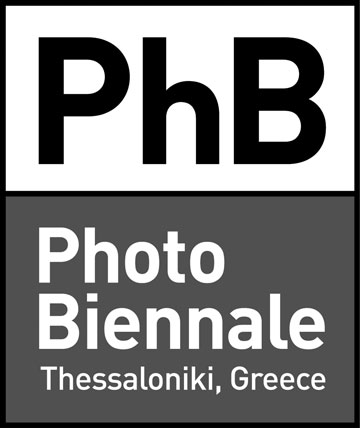
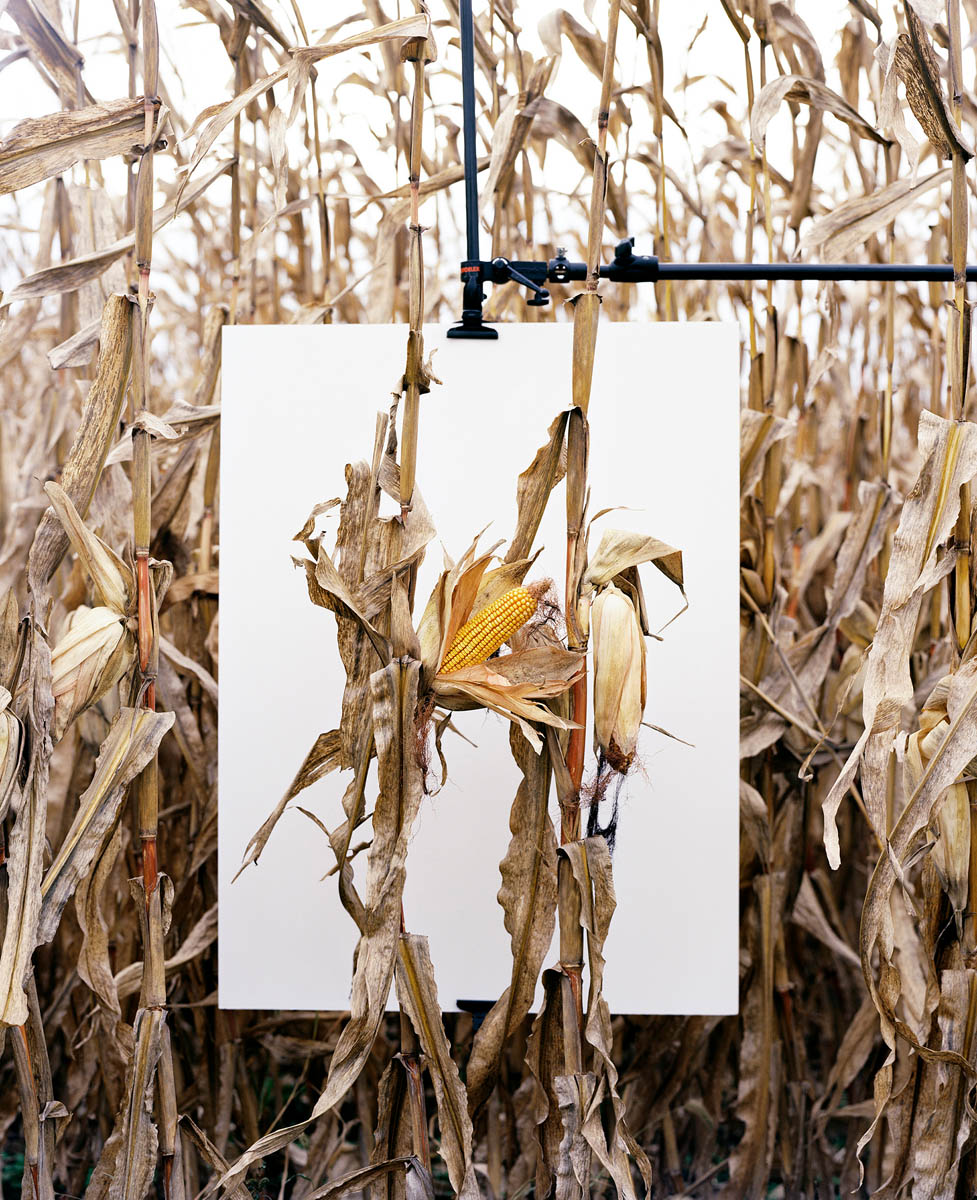


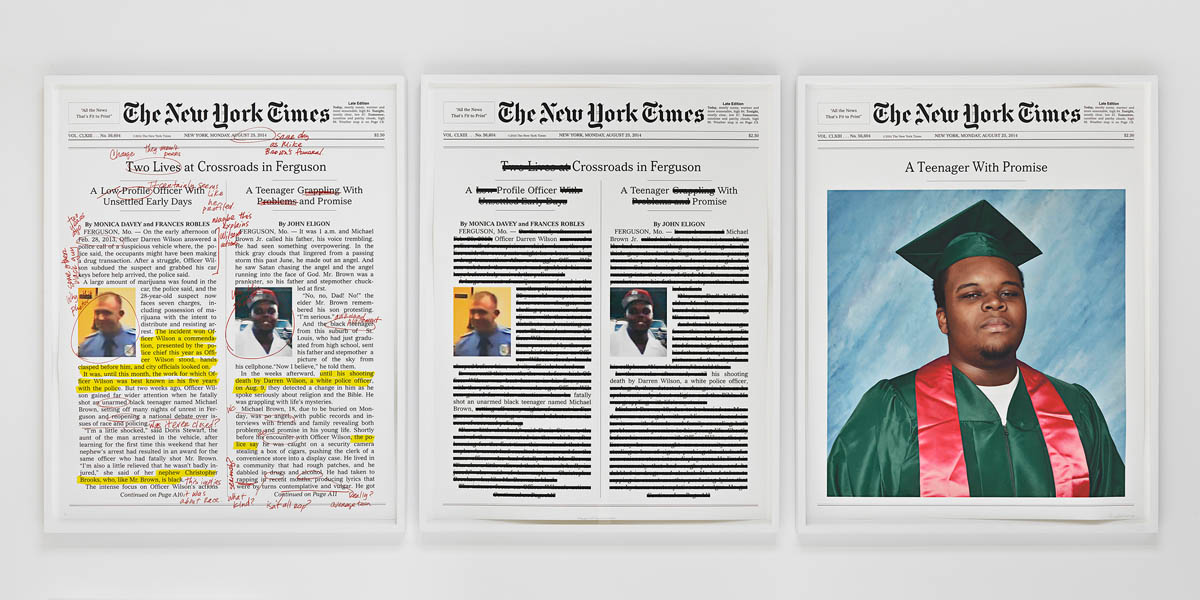
![Crofton Black (Ηνωμένο Βασίλειο, γ. 1974) and Edmund Clark (Ηνωμένο Βασίλειο, γ. 1963)<br/>Από τη σειρά <em>Αρνητική δημοσιότητα [αποσιωπημένη]</em>, 2011-2016<br/>Ευγενική παραχώρηση των καλλιτεχνών και της a/political](https://2021.photobiennale-greece.gr/wp-content/uploads/2021/09/CROFTON_BLACK_EDMUND_CLARK.jpg)
